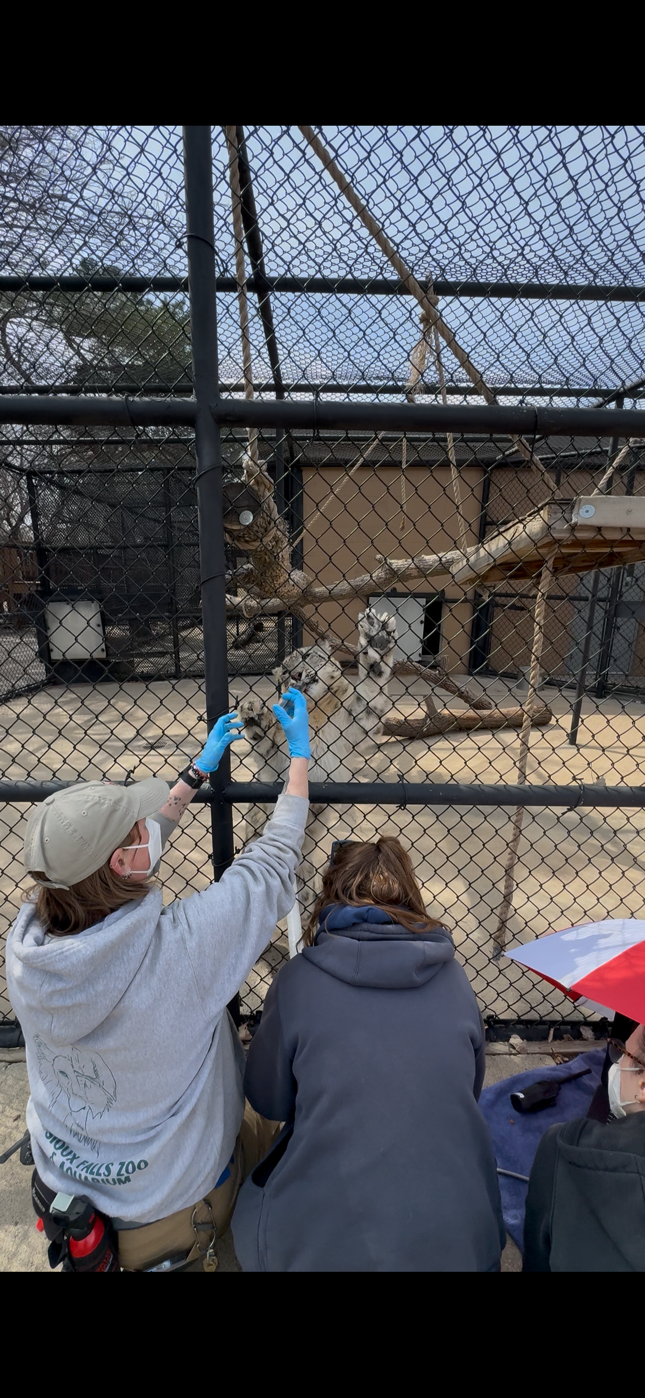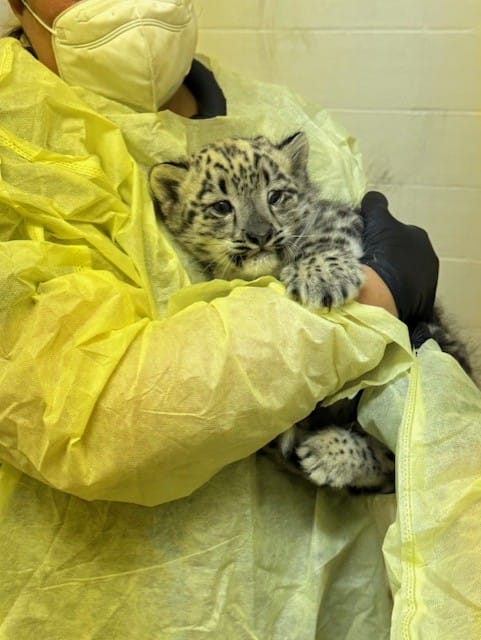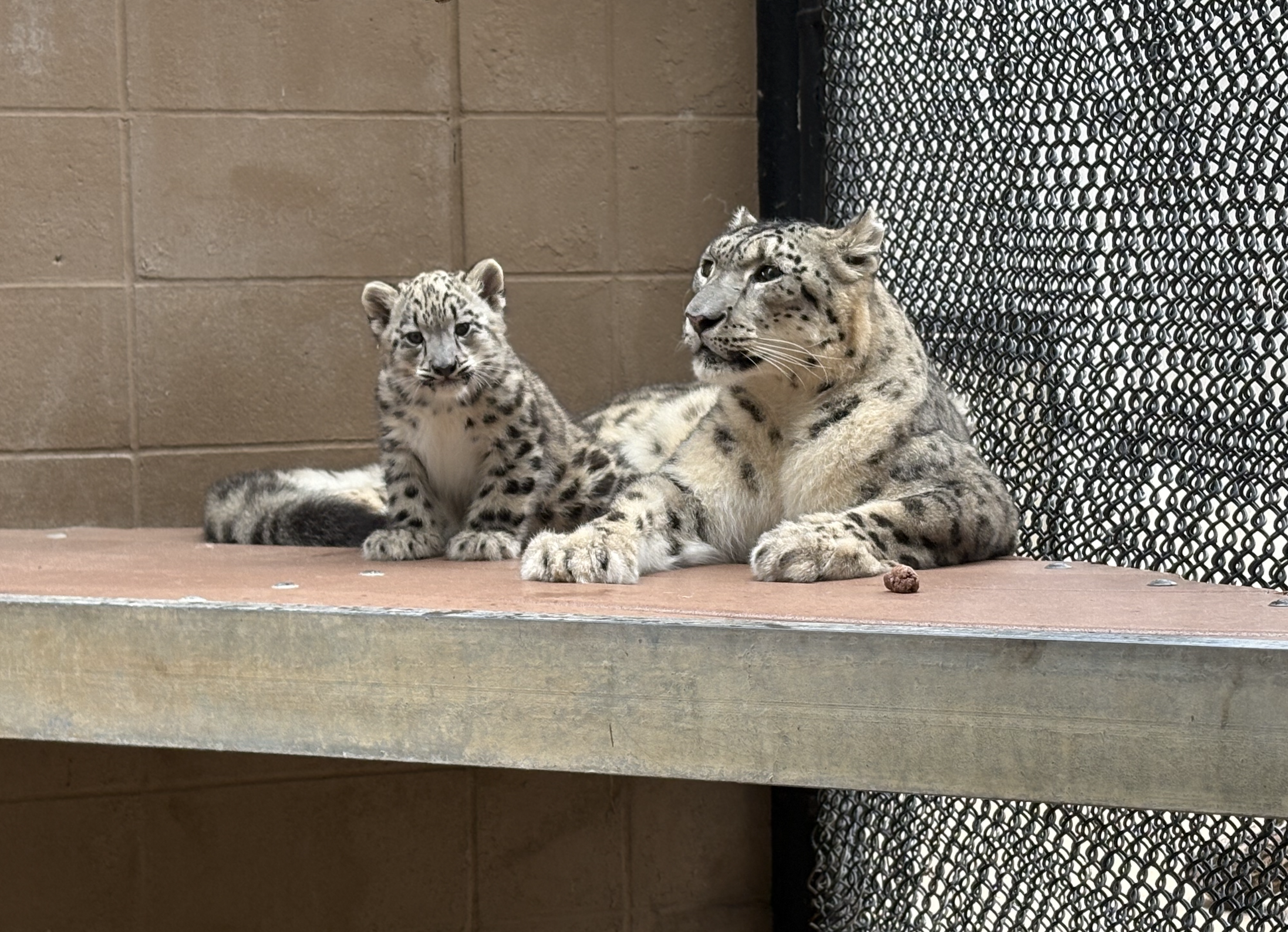This is a paid piece from the Sioux Falls Zoo and Aquarium.
Simplified: The Great Plains Zoo welcomed its first snow leopard cub in decades earlier this year: a baby girl named Asha. It's a win for both the zoo and the snow leopard species, and quite a bit of work went on behind-the-scenes to make sure everything went smoothly.
Why it matters
- Snow leopards are a vulnerable species, according to the World Wildlife Fund, which means they face a high risk of extinction in the wild. That means a new cub like Asha is a big deal in helping preserve the species.
- The Great Plains Zoo has tried a handful of breeding pairs, as recommended by a species survival program through the Association of Zoos and Aquariums, but Asha's parents, Denali and Strut, mark the first successful breeding since 2004.
- Much of the process involves setting the animals up for success and letting nature run its course, according to zookeepers, but there's also a tremendous amount of behind-the-scenes work that goes into training the animals for veterinary care, monitoring hormones, and making sure the transition to parenthood is as seamless as possible.
"This is why we get into this field is to try to save these animals from extinction," Carnivore Supervisor Angela Blommer said. "Every birth is important, but to know that it is happening in front of you, to see Denali become pregnant and then become a very, very good mother – it's such a proud moment."
Tell me more about the breeding process
Asha is Denali's first cub, and her only pregnancy so far, though it's possible Denali and Strut will get a chance to mate again once Asha is grown, Blommer said.
The breeding process itself starts with getting the timing right.
- Zookeepers are able to track Denali's estrogen and progesterone levels through her feces, and when she's in heat, she and Strut are put together and given a chance to mate, said Janelle Brandt, registered veterinary technician and hospital manager.
- Before any of that happens, zoo staff are watching for signals that the animals are responding positively to one another.
Strut and Denali had a few breeding interactions early this year, and ultimately were successful in February.
- Vet staff worked with Denali to train her to do a voluntary ultrasound, using some treats and an ultrasound probe covered in (safe, edible) coconut oil, Brandt said. The first image of the fetus was captured in March, and Asha was born in May.
- The gestation period for snow leopards is 104 days, Blommer said.

During pregnancy, Denali had an increase in food and some more attention from vet staff, but largely her routine and behaviors were no different than normal.
- She was also given a cubbing den behind-the-scenes where she could feel comfortable and prepare for birth.
What was birth like?
The zoo staff installed cameras behind-the-scenes so they could monitor during birth for any complications, but everything went exactly as it should.
"(Denali) was perfect," Brandt said. "She was a great mom. We didn’t see any concerns of her behavior or the cub’s behavior."
What about baby care?
Much like human babies, Asha's habitat needed some baby proofing. But most of her care at this point is coming from Denali.
- Asha is already scale-trained, which means she will voluntarily get on the scale for weight checks to make sure she's growing – which she very much is.

Asha and Denali are typically on exhibit Monday, Wednesday, Friday and Sunday, though with construction nearby, they've been opting to stay behind-the-scenes sometimes.
It's also important to note that you won't see Asha and her father, Strut, together in the same exhibit. In nature, snow leopard dads aren't a big part of the picture in child-rearing, and for Asha's safety, she's going to stick with mom.
What happens next?
Once Asha gets old enough, she'll likely move on to a new zoo and perhaps go on to have cubs of her own in line with the AZA species survival plan.
It's possible Denali and Strut will then breed again, Blommer said.


